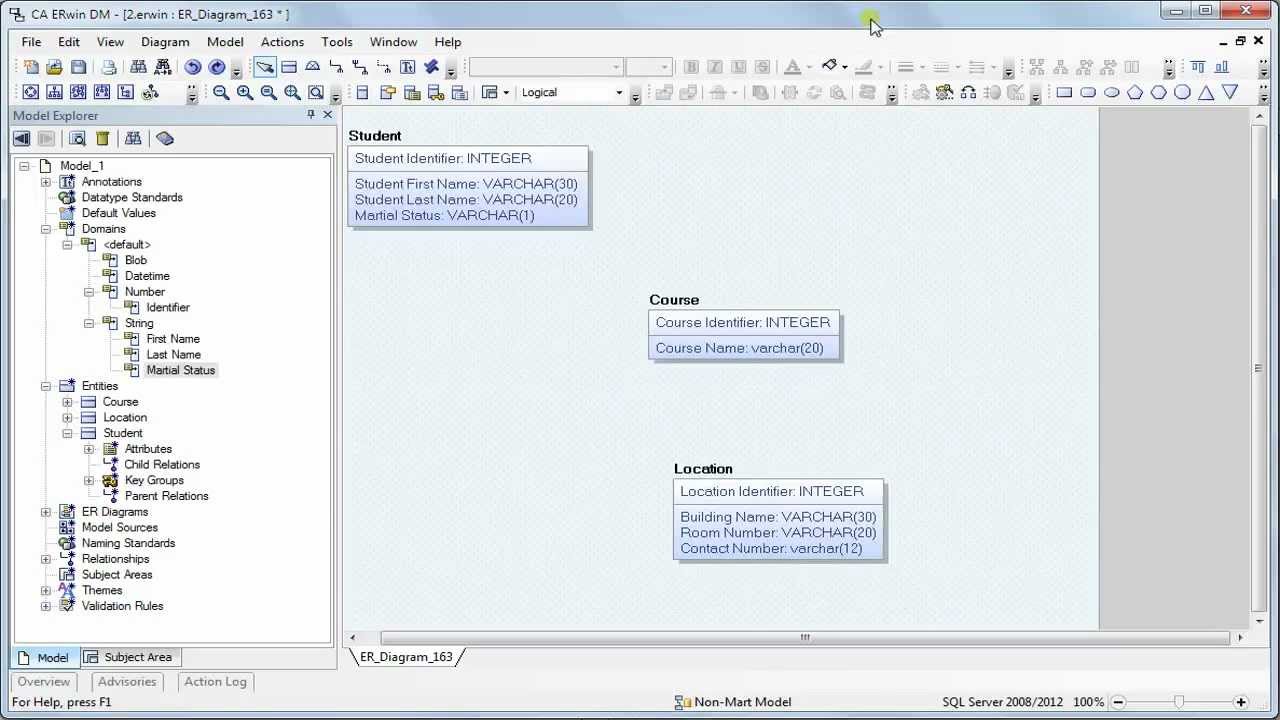

OK, now crack open your newly created 'CA ALLFUSION ERWIN DATA MODELER r7.MSI' with your favorite MSI editor (I use ORCA), browse to the Property table and add the following rows. Now browse to 'C:\Program Files\CA\SharedComponents\CA_LIC' and copy the 'ca.olf' license file to a safe location. After the install has completed you must open the app and enter a license key to create the license file. Copy this file to a safe location, then go ahead and complete the install.

Once the setup extraction has completed browse to '%DOCUMENTSANDSETTINGS\%USERNAME%\Local Settings\Temp' and locate the extracted 'CA ALLFUSION ERWIN DATA MODELER r7.MSI' file (133,406 KB).

If objFSO.FolderExists(strDestination) Thenįirst launch the ErwinSetup.exe file. 'required in order to allow the application to uninstall. 'This Sub validates the existance of the destination folder. Set objFileCopy = objFSO.GetFile(strFilePath & strFile) Set objFSO = CreateObject("Scripting.FileSystemObject") StrDestination ="C:\Program Files\CA\SharedComponents\CA_LIC\" StrFilePath = "\\location of the ca.olf License File\" 'Define the source file and path as well as the destination path I had to do this allow the uninstall to execute without failing.Ĭreate a custom action to call the VBScript in the Execute Deferred sequence between "PatchFiles" and "DuplicateFiles". This script validates the existance of the directory structure and quits if it is not found (ie, during an uninstall). This script allows the uninstall to complete. I utilized a VBScript (below) to copy ca.olf to the local computer.Īfter marking the "CA_LIC" folder for deletion on uninstall (in order to delete the ca.olf file) the uninstall failed. Great information fpthree - these notes helped me out of jam.


 0 kommentar(er)
0 kommentar(er)
